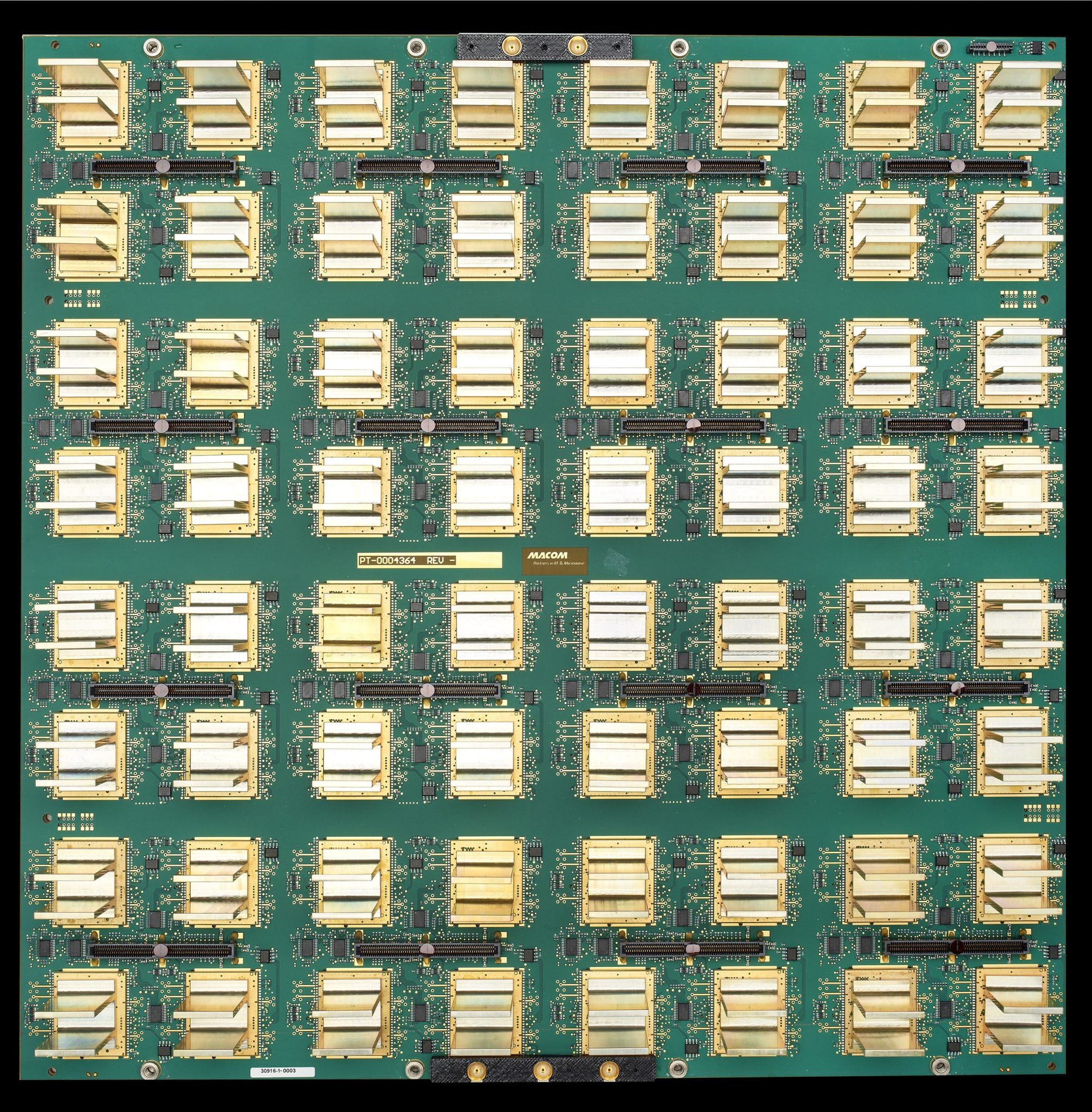 |
| Multifunction Phased Array Radar (MPAR) technology developed by MACOM and MIT. Photo: Business Wire |
[Avionics Today 09-24-2015] M/A-COM Technology Solutions (MACOM), supplier of analog RF, microwave, millimeterwave and photonic semiconductor products, and the Massachusetts Institute of Technology (MIT) Lincoln Laboratory, have completed field tests of Multifunction Phased Array Radar technology (MPAR). MPAR technology is envisioned to be the foundation for the next generation of civil radar networks, integrating eight separate legacy radar functions into a single multifunction platform. Developed by MIT Lincoln Laboratory under sponsorship of the FAA and National Oceanic and Atmospheric Administration (NOAA), the system leverages an array of MACOM-manufactured phased array tiles to transmit and receive pulses of radar energy to detect and track weather systems, while at the same time providing civil air surveillance.
Used by NOAA, MPAR-based systems can increase forecast accuracy for severe weather events, such as tornadoes, and facilitate earlier major storm warnings. In addition to early weather tracking, MPAR technology supports Air Traffic Control (ATC) functionality. Built more than three decades ago, the current ATC network is approaching obsolescence and upgrading to MPAR-based systems will provide improved awareness in air traffic patterns, according to a statement from MACOM.
“This successful test deployment is a significant milestone for the MPAR technology initiative, demonstrating the maturity of the technology and the manufacturing processes that underpin it,” said Doug Carlson, vice president of strategy at MACOM. “The next step is to move to volume commercial manufacturing that can support the scale of production of civil and defense deployments in the field.”